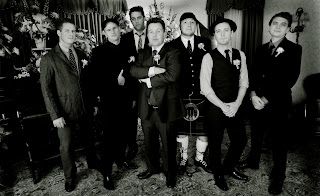 |
| You win, or you die. |
I make a lot of references to pop culture on this blog,
or perhaps more accurately, nerd culture. Then again, many alleged experts of
such things claim that nerd culture is the new pop culture. Beer culture and
nerd culture go hand in hand, mostly because of the passion that underlies both
subsets of our society. As a result of that passion, people become obsessed,
and obsession leads to social pursuits such as this blog (shameless promotion
alert), or really cool collaboration projects such as the one I’m about to reference.
Wait for it…
 |
| Pride of Cooperstown |
HBO and Brewery Ommegang (Cooperstown, NY) have teamed-up
to create beers that are inspired by the COMPLETELY AWESOME television-based
nerd drama Game of Thrones. For those
of you who watch GOT, I’m sure that the sheer overwhelmingness of what I just
wrote has knocked you to the floor, so I’ll give you a moment to compose yourself
and try to explain the show to non-watchers.
For those of you who aren't watching this show, Game of Thrones is based on the series
of books by George R. R. Martins called A
Song of Ice and Fire. It’s basically a medieval-like fantasy genre show
that interweaves several plot lines: the first follows the members of several
noble houses in a civil war for the Iron Throne of the Seven Kingdoms; the
second covers the rising threat of the impending winter and the mythical
creatures of the North; the third chronicles the attempts of the exiled last
scion of the realm's deposed dynasty to reclaim the throne. In other words, it’s
really cool.
And since season three debuts this Sunday night, what
better time to tell all of you that aren't already aware that this new craft
brew is coming… to a store near you. Here are a few words from the brewers:
Brewery Ommegang and HBO are partnering on a series of
beers in support of the critically-acclaimed drama Game of Thrones. Launching
in tandem with the season three debut, Iron Throne is the inaugural beer in the
series.
 |
| Delicious looking; cool label art too |
Iron Throne is a blonde ale at 6.5% ABV and brewed with a
robust amount of pils, honey malt, aroma malts and red wheat. Gentle hopping
includes Styrian Golding and Hallertau Spalter Select, appropriately noble
hops. Spiced with grains of paradise and lemon peel. Hue is a slightly hazy
golden amber. Head is full and fluffy. Finish is crisp, backed by a touch of
spice and hops. Aroma is a bit grassy with a hint of lemon fruitiness from the
lemon peel. Taste is lightly malty, rounded out by honey malt sweetness.
Available in limited quantities in 750ml bottles and 1/6
BBL kegs starting in late March 2013.
This is pretty cool stuff. Generally speaking, when
like-passioned people get together to collaborate on a project that transcends
the divide between their crafts, greatness happens. Ommegang has been brewing
Belgian-inspired beer in the American craft beer scene for years, and their
track record is flawless. From their Hennepin Saison to their Three
Philosophers Belgian Quadruple, their attention to detail and passion for their
craft is evident in every pint, and I expect that same attitude to be manifested
in Iron Throne.
 |
| The Ommegang Brewery |
As an aside, if you’re looking for a weekend getaway
idea, Ommegang offers an excursion where you arrive on Friday night, stay at a
bed and breakfast in Cooperstown, spend the day Saturday taking in the sites
(Baseball Hall of Fame?), and then attend a beer dinner at the brewery Saturday
night, complete with brewery tour. Of course, you’ll retire to the B&B
afterwards and leave Sunday after breakfast. Sounds like a pretty cool deal to
me.
And no, I do not receive any kind of compensation from
Ommegang (or HBO for that matter) for shamelessly pushing their products…
though I am willing to listen if they are reading this blog…
Now, if you wanted to achieve ultimate rock star status,
you would've attended the Ommegang beer weekend this weekend, drank some Iron
Throne at the brewery itself, brought a growler of it home with you and enjoyed
said beer from said growler while tuning into the debut episode of season
three, Sunday night at 9:00 eastern on HBO. Of course, by now, you've already
missed the boat on this (as have I for that matter… blast!) but it would've been pretty cool.
Again, watch Game of Thrones, drink Ommegang Iron Throne
Blonde Ale, and HBO/Ommegang/George R.R. Martins, if you’re reading this, I am
willing to accept comps. Just saying.
Here’s to craft-brewed happiness… Cheers!

















